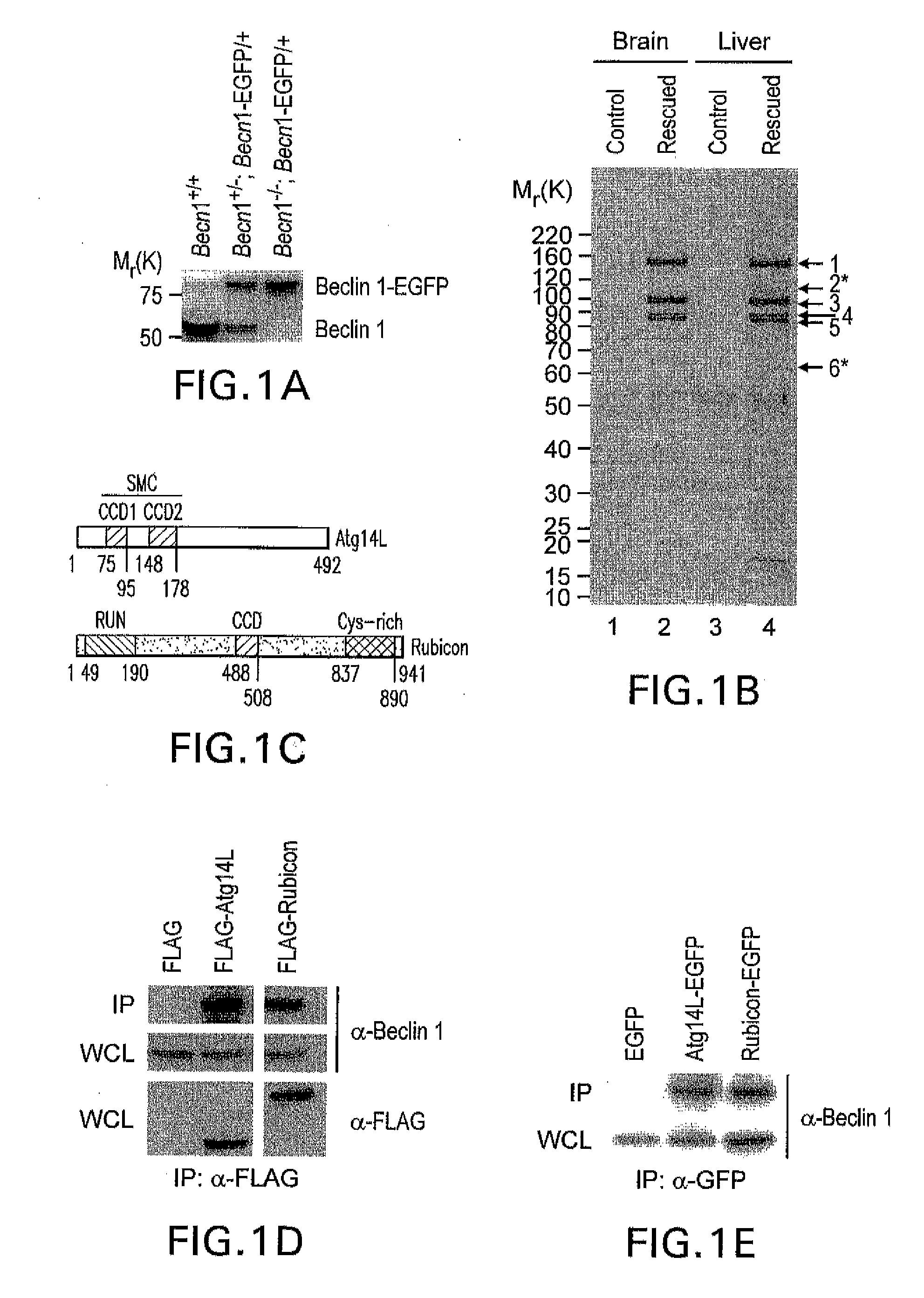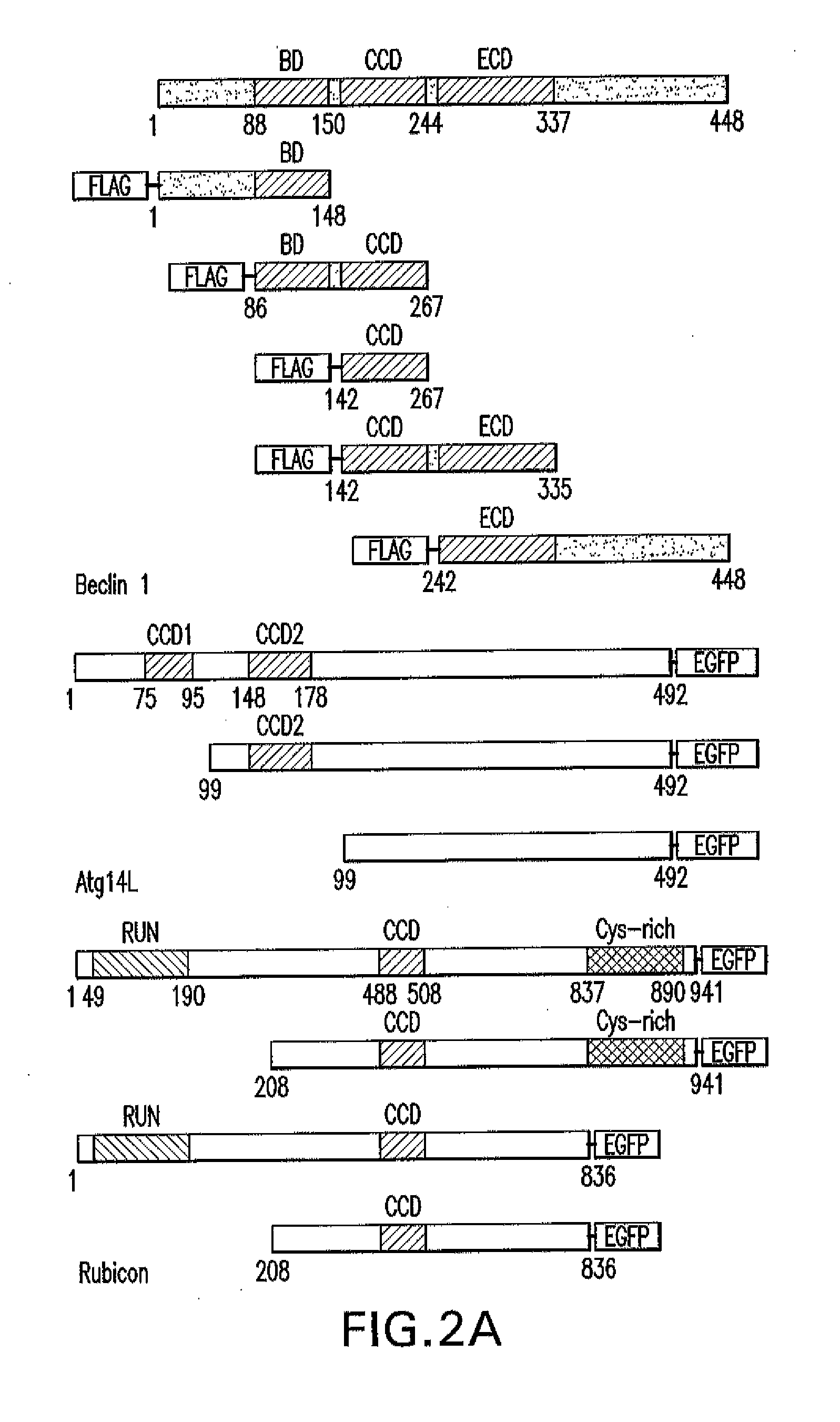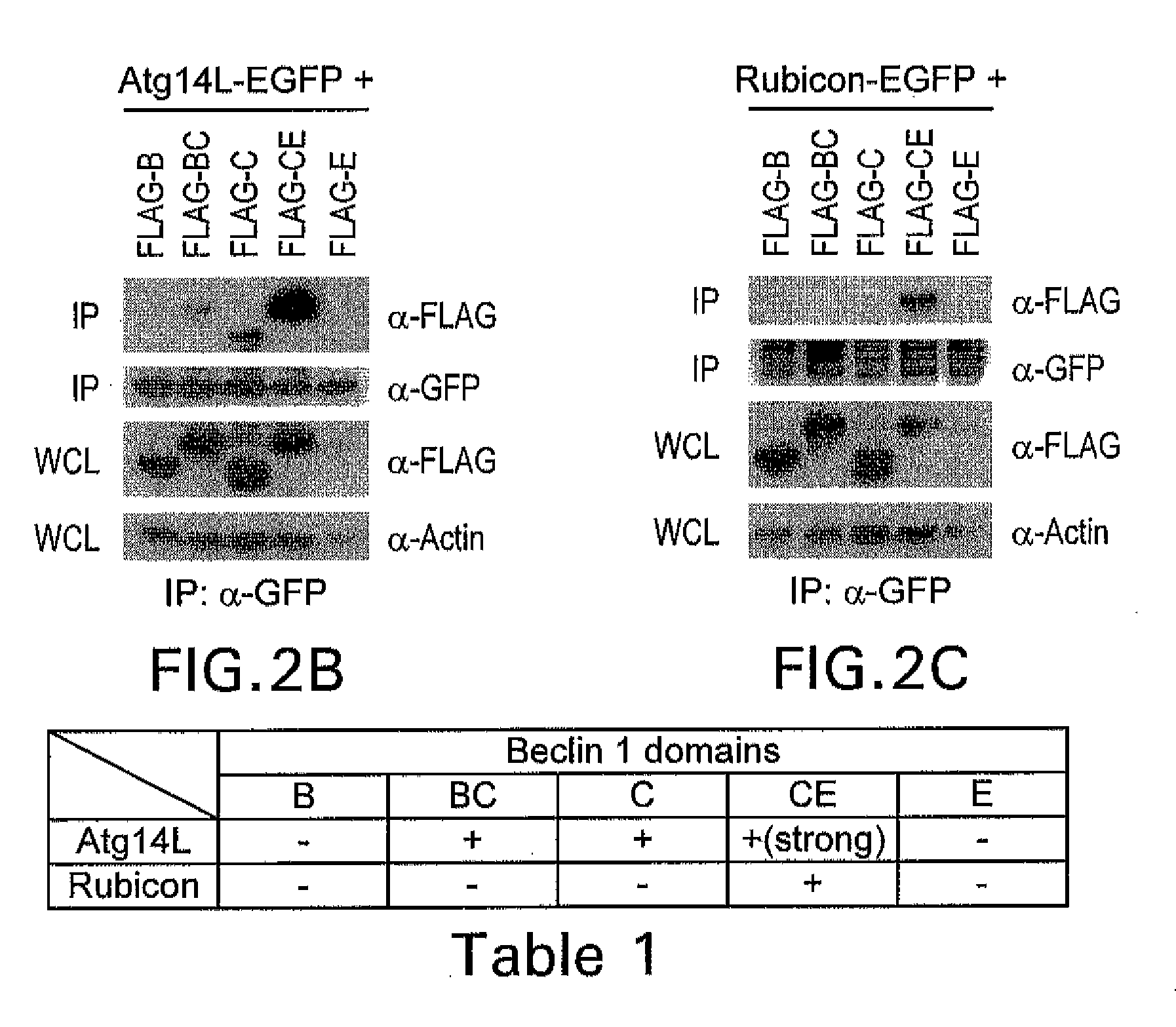Novel autography regulators atg14l and rubicon
- Summary
- Abstract
- Description
- Claims
- Application Information
AI Technical Summary
Benefits of technology
Problems solved by technology
Method used
Image
Examples
example 1
6.1 Example 1
6.1.1 Results
[0282]Identification of ATG14L and Rubicon as novel Beclin 1-binding proteins in transgenic mice expressing functional fusion protein Beclin 1-EGFP
[0283]Affinity purification of tagged proteins expressed in cultured cells is commonly used for identifying protein-binding partners. A potential disadvantage of this approach is competition from the endogenous protein with the exogenously tagged protein for the binding of the same partners, preventing efficient capture of the binding proteins. In addition, it is difficult to assess whether the identified binding proteins are cell / tissue-specific. To address these issues, generated BAC (Bacterial Artificial Chromosome)-mediated transgenic mice expressing a fusion protein of Beclin 1 and enhanced green fluorescence protein (Beclin 1-EGFP) was generated by insertion of the EGFP cDNA sequence at the C-terminus of beclin 1 (FIG. 9A). These beclin 1-EGFP transgenic mice are expected to produce Beclin 1-EGFP under the ...
example 2
6.2 Example 2
The Effect of ATG14L and Rubicon to Breast Cancer
[0358]The ATG14L knock-out mice (ATG14L+ / − and ATG14L− / −) were made. Genotyping of these Atg14L knock-out mice and embryos were performed (FIG. 18). These results showed that homozygous ATG14L− / − was embryonic lethal (see the first lane in FIG. 18). The hertozygous ATG14L+ / − knock-out mice, although were not observed to be embryonic lethal, were expected to develop tumors. Then Beclin 1 and ATG14L were detected in various breast cancer cell lines: MD231, MD361, MD453, T47D, MCF-7, HBL100, ZR75.1 (FIG. 19). Beclin 1 and ATG14L had lower or no expressions in some of these breast cancer cell lines. Compared to its expression in other breast cancer cell lines, Beclin 1 had lower expression in HBL100 cell lines, and no expression in MD231 cell lines. Compared to its expression in other breast cancer cell lines, ATG14L had greatly lower expression in MD361 cell line, and no expression in T47D and MCF-7 cell lines. These results...
example 3
6.3 Example 3
[0360]TAU is a protein implicated in Alzheimer's disease. Accumulation of phosphorylation of TAU has been seen in Alzheimer's disease. First, the effect of Beclin 1 deficiency on phosphorylation levels of TAU was examined. The results have shown that Beclin 1 deficiency increased total TAU and Tau phosphorylation levels (FIG. 21). Beclin 1+ / − mice enhanced total and hyperphosphorylated Tau levels. For example, Beclin 1+ / − mice showed increased Tau phosphorylation and total Tau levels at one year, specifically at T231 (FIG. 21A-B). The result has also shown that the enhanced phosphorylation in Beclin 1+ / − mice was age dependent, since there was no clear difference between the Beclin 1+ / − mice at one year and Beclin 1+ / + mice at six months (FIG. 21C). However, EMX-Cre Beclin F / F mice at p25 (EXM-Cre conditional knockout) mice only showed enhanced phosphorylation of Tau at T231 and 5235 in comparison to wildtype littermate control. These results have shown that Beclin 1 de...
PUM
| Property | Measurement | Unit |
|---|---|---|
| Fraction | aaaaa | aaaaa |
| Atomic weight | aaaaa | aaaaa |
| Atomic weight | aaaaa | aaaaa |
Abstract
Description
Claims
Application Information
 Login to View More
Login to View More - R&D
- Intellectual Property
- Life Sciences
- Materials
- Tech Scout
- Unparalleled Data Quality
- Higher Quality Content
- 60% Fewer Hallucinations
Browse by: Latest US Patents, China's latest patents, Technical Efficacy Thesaurus, Application Domain, Technology Topic, Popular Technical Reports.
© 2025 PatSnap. All rights reserved.Legal|Privacy policy|Modern Slavery Act Transparency Statement|Sitemap|About US| Contact US: help@patsnap.com



